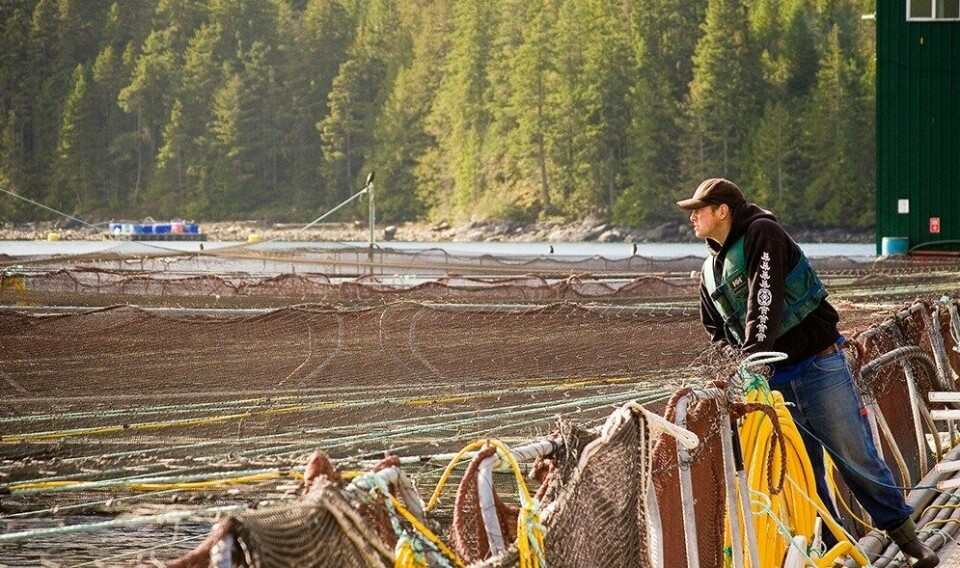
Canadian fish farmers hail ‘milestone’ as Aquaculture Act moves closer
Canada’s fish farmers have welcomed a significant move by ministers towards a longed-for Aquaculture Act that could help simplify regulation and provide a champion for the industry at federal government level.
At a meeting on Wednesday, the Canadian Council of Fisheries and Aquaculture Ministers (CCFAM) directed officials to develop federal legislation with limited scope that respects federal, provincial and territorial jurisdiction and provides greater clarity to the sector.
The sector’s great potential for Canada was identified in the Agri-food Report from Canada’s Economic Strategy Tables released in September. The report cited the potential for the sector to nearly double production from 200,565 tonnes in 2016 to 381,900 tonnes in 2028 to meet rising global demand.

150-year-old legislation
Tim Kennedy, chief executive and president of the Canadian Aquaculture Industry Alliance (CAIA), told Fish Farming Expert the decision by the federal, provincial and territorial ministers in the CCFAM was “a real milestone” for Canadian aquaculture.
“The industry in Canada has been advocating for this for a number of years,” explained Kennedy, whose organisation’s members include all of Canada’s major Atlantic salmon farmers.
“We’ve been regulated under the Fisheries Act, which is a 150-year-old piece of legislation that doesn’t even mention the word ‘aquaculture’ in it. It’s really for the protection of wild stocks and habitat, so it’s really an inappropriate tool to regulate a growth-oriented farming sector.
“That’s the main reason we’ve been advocating for this, and it’s been a long path, we’ve been doing this very actively and in a focused way for about five years.”
Kennedy said that because the Department of Fisheries and Oceans (DFO) is the primary regulator on the west coast, whereas provincial governments have primacy on the east coast and the rest of the country, a new federal Act is unlikely to bring everything under one set of rules, but would provide a framework for better-organised regulation.
“It will help to coordinate what’s going on on the ground and help to clarify responsibility,” he said.
“The first thing is really for the federal government to get its house in order. We have many different federal departments that have touch points and regulatory authority over the sector, but it’s often not all that clear (who does what).
“Even more important than that, we don’t have a departmental structure in Canada where one department is actually a champion of our growth.
Federal champion
“DFO is our primary regulator, and they’re just not able to do that because their primary function is to protect wild stocks and conservation. They’re not able to stand up and really support the growth of our sector, so identifying a champion in our federal structure is very important.
“We’d say that champion should be Agriculture Canada, recognising us as farmers and allowing us to access farm support programmes that they have in Canada for terrestrial farmers. That’s really critical for us as well.”
Kennedy said the CAIA was looking at working with departments and other partners to see some drafting of the bill in the next year, with the aim to produce a draft for broader consultation by early 2020.
“Then you start the parliamentary process, which is not expected to be all that fast,” said the CEO.
“In a sense the real work begins now.”
Platform for discussion
Kennedy said an Aquaculture Act would not solve problems in British Columbia, where the provincial government and some First Nations oppose net pen salmon farming, but said it would offer “a platform for discussing greater collaboration”.
“The dialogue with BC is continuing, but I would say also improving, increasing, and there’s certainly much stronger dialogue going on than we’ve ever seen before with First Nations in BC. In a sense they’re the critical partner in BC. That’s not necessarily addressed by an Act, that’s more on-the-ground practical relationships.”























































